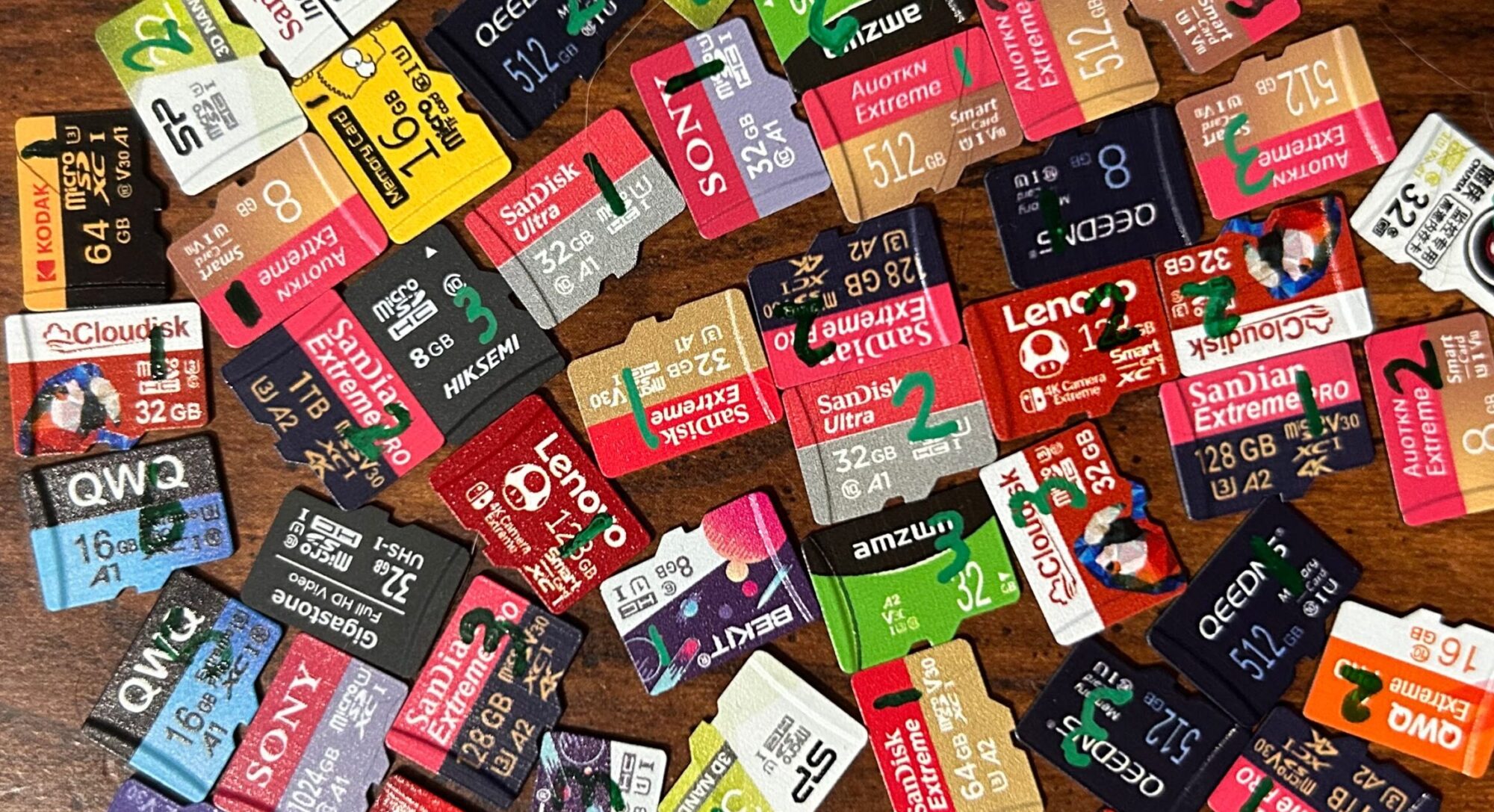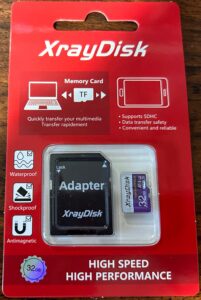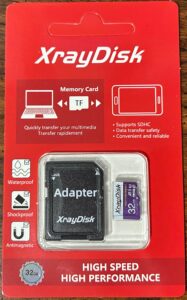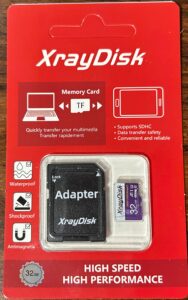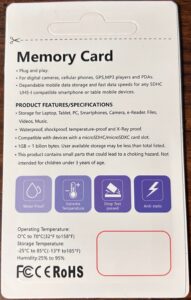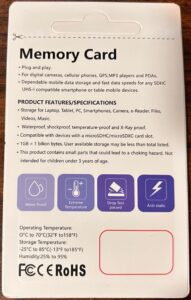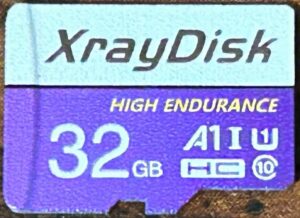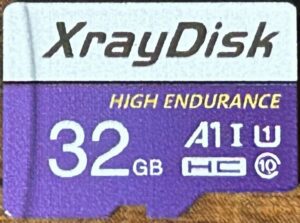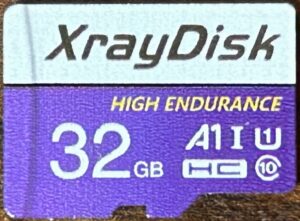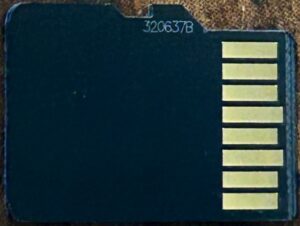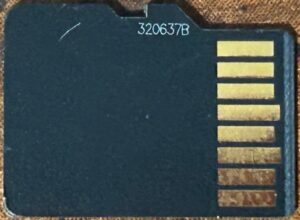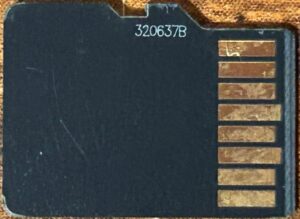- Obtained from: AliExpress
- Price paid: $3.70
- Advertised size: 32GB
- Logical capacity: 31,275,876,352 bytes
- Physical capacity: 31,275,876,352 bytes
- Fake/skimpy flash: Skimpy (2.26% skimp)
- Protected area: 134,217,728 bytes
- Adjusted skimp: 1.84%
- Speed class markings: Class 10, U1, A1
- CID data:
- Manufacturer ID:
0x6f - OEM ID:
0x0303 - Product name:
0x5344414243(ASCII:SDABC) - Product revision:
0x10
- Manufacturer ID:
Discussion
This is an off-brand product that came up early in my AliExpress searches, and I think the “High Endurance” part of the name may have been what inspired me to obtain the SanDisk High Endurance and Samsung PRO Endurance to have some name-brand samples to compare it to.
Performance-wise, sequential read and random read speeds were close to average. Sequential write speeds were above average, while random write speeds were below average. Compared to the other off-brand cards I tested, however, sequential speeds and random read speeds were above average, while random write speeds were below average. Performance on all three cards was good enough to qualify for the Class 10 and U1 markings that they carried, but no single card scored well enough to qualify for the A1 marking. Given that all three cards got close to the 1,500 IOPS/sec threshold for random read operations, and sample #2 got somewhat close to the 500 IOPS/sec threshold for random write operations, it’s possible that they would have performed better under proper testing conditions.
I wish measurements had been clustered closer together — but the fact that they’re not could indicate inconsistencies with how these cards were manufactured.
What really disappointed me, however, was endurance: all three of these cards only managed to go for a few read/write cycles before hitting their first error. The fact that this happened with all three cards and that the data points are so close together points to a possible quality control issue (although who am I kidding, these cards didn’t go through any quality control). On the bright side, these cards did display some ability to self-heal, as all three cards stopped displaying errors after round 136. However, endurance tests are still ongoing. As of the time of this writing:
- Sample #1 experienced a 1,258-sector wide error during round 13. I don’t know the nature of the error, because the version of the program I was using at the time didn’t log this information. It has survived 17,232 read/write cycles so far. (In the interests of full disclosure, I will say that there were more errors after round 136, but those were attributable to problems with the portions of my code that handles device disconnects/reconnects. Once those problems were fixed, the card stopped experiencing errors.)
- Sample #2 experienced a series of bit flip errors affecting 8 sectors starting in round 3; it has survived 13,283 in total so far.
- Sample #3’s first error was a series of bit flip errors affecting 18 sectors during round 68. It experienced a few more errors on later rounds, but for the most part was chugging along quite happily until round 8,671 — when any attempt to read from or write to the card resulted in an I/O error.
April 25, 2025 (current number of read/write cycles is updated automatically every hour)
